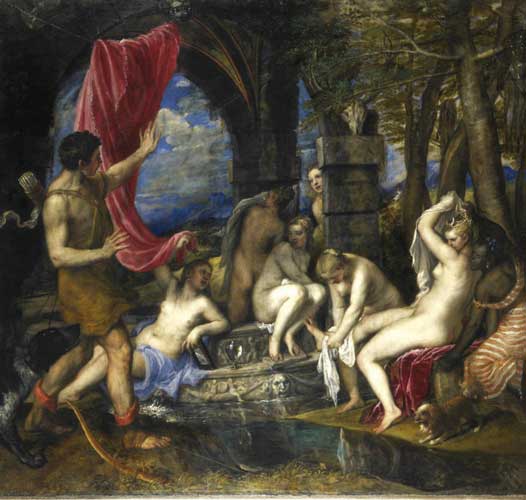Titian campaign saves £50m 'Diana' for nation
Windfall for duke as £17.5m Scottish Executive grant secures masterpiece

Your support helps us to tell the story
From reproductive rights to climate change to Big Tech, The Independent is on the ground when the story is developing. Whether it's investigating the financials of Elon Musk's pro-Trump PAC or producing our latest documentary, 'The A Word', which shines a light on the American women fighting for reproductive rights, we know how important it is to parse out the facts from the messaging.
At such a critical moment in US history, we need reporters on the ground. Your donation allows us to keep sending journalists to speak to both sides of the story.
The Independent is trusted by Americans across the entire political spectrum. And unlike many other quality news outlets, we choose not to lock Americans out of our reporting and analysis with paywalls. We believe quality journalism should be available to everyone, paid for by those who can afford it.
Your support makes all the difference.A campaign by Britain's art establishment to raise £50m in four months to buy a Titian painting from one of the nation's wealthiest men has been successful, but only after the Scottish government stepped in with a £17.5m grant. The purchase will be announced in the next few days.
The grant from the Scottish Executive represents more than a third of the total cost of Titian's Diana and Actaeon, almost all the rest coming from other public sources.
Now the National Galleries of Scotland have another four years to buy a second Titian painting – Diana and Callisto – from the Duke of Sutherland, who announced in August that he wanted to sell the works from his renowned Bridgewater collection in order to diversify his assets.
The duke, whose fortune is around £230m, had given a New Year's Eve deadline for galleries to come up with the first £50m, but has extended this while legal loose ends are tied up.
Both pictures have been in the duke's family for 220 years and on loan to the National Gallery of Scotland since 1945. Painted in 1559, they have never been separated.
The National Gallery in London, which will share the paintings on a five-year rotating basis, has donated £12.5m, the National Heritage Memorial Fund £10m and the Art Fund £1m. Several wealthy individuals have been persuaded to make substantial contributions totalling around £8.5m. The remaining £500,000 has been donated by members of the general public.
Five years ago the duke was paid £11m of public cash for another Titian – Venus Anadyomene – in a deal to help him pay death duties after inheriting the collection in 2000. The duke has agreed that no other works will be sold for 21 years. If he dies before then, however – he is 68 – his heir could be faced with similar problems when faced with inheritance tax.
Art experts believed the paintings would raise around £150m each on the open market, although no painting has ever sold for more than £75m. The art world has been united in its desire to see the paintings purchased and argues that £50m for each is a bargain.
The artist and art critic Professor Barry Fantoni, however, said it would be no loss to the nation if the works were sold privately. "We've already got Titians that no one goes to see," he said. "We don't need more of them. We need to understand more about the ones we already have. The fundraising is a red herring. All people are doing is trying to help the Duke of Sutherland out of a tight financial spot. It seems gross to me. I don't know where the valuation comes from. I think £50m is the best he can hope for."
Glasgow Labour MP Ian Davidson also challenged the sale. "£100m is an obscene amount of money, especially in the current climate," he said. "What's more he won't pay tax on the sale, which is reprehensible."
One dealer specialising in Old Masters, who supports the purchase, said that the duke would be likely to run into a lot of difficulty if he tried to sell them on the open market. "The Government would slap an export order on them and would keep renewing it for six or seven years," he said. "Art dealers abroad are resigned to the fact that it's very difficult to buy great works from this country."
Brian Sewell, the art critic, said that the Titians would be the finest Old Masters ever to come on the market. "Looking at how profligate the art market has been, and that far fewer Old Masters come on to the market than contemporary works, the suspicion is that these two paintings are a bargain. But it's a great imponderable because of what's happened to everybody's money."
The National Galleries of Scotland refused to comment beyond a statement released last week, which said no announcement on the sale of the Titians would be made until this month.
Join our commenting forum
Join thought-provoking conversations, follow other Independent readers and see their replies
Comments